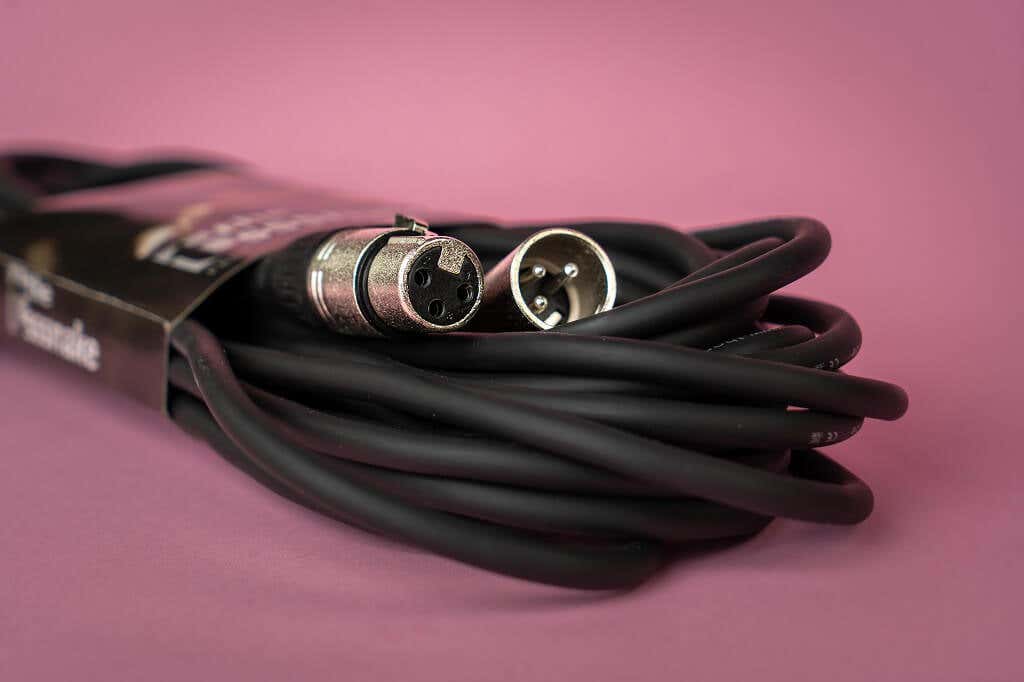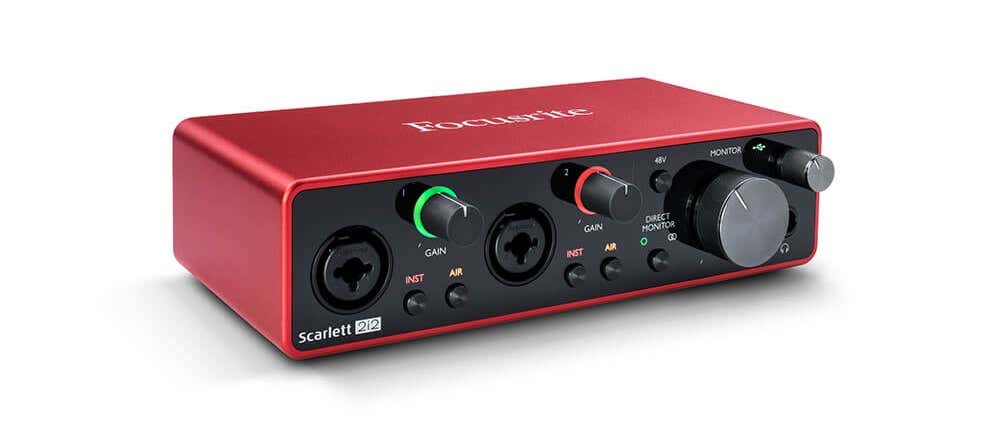If you’re serious about music production, having the perfect audio interface is a top priority. But choosing the right interface can be a challenge, especially if you’re new to audio production.
In this article, we’ll describe what an audio interface is, why you need one, and 6 of the best entry-level to professional-grade audio interfaces.
What Is an Audio Interface and Why Do You Need One?
An audio interface connects your microphone and instruments to your PC and converts the analog signals into a digital audio format that your computer software can recognize and interact with. This is why they’re also referred to as “converters”. It also connects to your studio monitors and headphones, transmitting sound directly from the inputs.
An audio interface is necessary if you want to record sound from instruments and other audio devices as it will help you achieve much higher sound quality when producing.
Some of the things to consider when choosing an audio interface are:
- The input/output configuration. Inputs are where you connect incoming sound devices, like guitars or microphones. The number of outputs will determine what kind of speaker setup you can connect to. Depending on your uses, you may only require one or two inputs/outputs. However, if you want to record from multiple sources at a time (for instance, if you need multiple instruments and vocals), then you’ll need more. Interfaces range from 2-in/2-out to hundreds of channels.
- The type of inputs/outputs. Depending on the audio interface, it may have line inputs and instrument inputs. Line inputs take line-level (high-power) signals from powered equipment like a synth, whereas instrument inputs are designed for things like mics and guitars that produce a low-voltage signal (this is where preamps help by raising the signal to line-level). The connection format is also important depending on your needs (e.g. 1/4”, XLR, TRS, ADAT, RCA connectors). Like inputs, you’ll want to pay attention to what format the outputs are and whether this matches your equipment and needs.
- The type of connection. Most interfaces connect to a workstation via a USB cable (Windows) or via FireWire (for recording on Apple Mac and iOS devices like iPads). Newer models use USB 3.2 or Thunderbolt. The final type of connection is PCIe which involves installing the interface into your computer’s motherboard. These are generally reserved for high-throughput professional studios and are generally more expensive.
- Bitrate and sample rate. The higher these are, the better overall audio quality you will record. Most audio interfaces in this list have a 24-bit bitrate and 192kHz sample rate, which is sufficient for almost all uses.
- Brand. Several brands create high-quality audio interfaces, including Behringer, Presonus, Motu, Clarett, M-Audio, Audient, and so on. Some of these focus on different niches, so depending on whether you’re a singer/songwriter, podcaster, band, producer, or film scorer, some brands may be better suited to your needs.
With that out of the way, here are 6 of the best audio interfaces ranging from low-budget to professional-grade options.
1. Behringer U-Phoria UMC404HD
The cheapest option on our list, the UMC404HD is perfect for those on a budget. At only $169.00, this Behringer interface gives an impressive bang for the buck. Some of its features include:
- Four XLR-1/4” combo inputs and a MIDI input
- Four line outputs with MIDAS mic preamps
- Latency-free headphone playback
- USB 2.0 connectivity
- Phantom Power switch for all four inputs (provides DC current to condenser microphones that require it to function)
- 24-bit/192kHz recording quality
There are some obvious downsides to this USB audio interface like the older USB ports, but at the price point, it remains one of the best options.
2. Focusrite Scarlett 2i2 Third Gen
There are several Focusrite audio interfaces, many of which are highly regarded by producers. On a budget (or for beginners), the best option is the Focusrite Scarlett 2i2 Third Gen which is suited to solo or duo recording.
Features of the Scarlett 2i2 Third Gen:
- A budget price at around $200 on Amazon
- Two high-headroom combo inputs (doubling as line/instrument inputs with built-in mic preamps)
- One headphone output and two 1/4” TRS monitor line outs
- USB 2.0 Type-C connectivity
- 24-bit and 192kHz converters
The 2i2 also comes with free lite versions of Ableton 11, ProTools, and Focusrite’s plug-in suite meaning you can get straight to work.
If you need more inputs/outputs, the Focusrite Scarlett range goes right up to the Scarlett 18i20 with 18 inputs and 20 outputs.
3. Audient ID4 MkII
The Audient ID4 Mark II is a high-quality and affordable audio interface with the perfect functionality for your home studio. Replacing the discontinued original model, the ID4 MkII brings several new features to the plate, including faster USB 3.0 speeds and updated cosmetics.
- Budget price point at $199
- Two inputs with world-class preamps
- Two studio-grade headphone outputs
- USB-C 3.0 connection
- Compatibility with Mac, iOS, and Windows
- Free ARC software bundle including virtual instruments, and plug-in FX
The ID4 MkII is another great choice for small-scale home recording. A good alternative at a similar price to the ID4 MkII is the Audient EVO 4. In comparison with the ID4’s single microphone preamp, the EVO 4 has two mic inputs with preamps, one of which doubles as an instrument input.
4. Solid State Logic SSL2+
The SSL2+ is a solid interface that features all of the specs necessary for small-scale music production. Some of the features of the SSL2+ include:
- An affordable, mid-range price point at $349.99
- Two XLR-1/4” combo inputs with class-leading preamps
- USB 2.0 Type-C connectivity
- A built-in MIDI-in interface that allows you to connect external MIDI equipment (like keyboards)
- Two monitor outputs and two high-current headphone outputs with independent controls
- Four RCA outputs on the back panel (two mirror the monitor outputs and two are independent)
- Legacy 4K button to add high-frequency boost and distortion, inspired by 4000-Series consoles
- Includes Ableton Live Lite 11, Vocalstrip 2, Drumstrip, and 6-months free use of the SSL Native plug-ins.
5. Universal Audio Apollo Twin MkII Duo
The Apollo Twin MkII Duo is a professional-grade audio interface that is essentially a scaled-down version of Universal Audio’s flagship Apollo 16.
Features of the Apollo Twin MkII Duo:
- Professional price point at $1,299
- 2-in/6-out configuration with two combo inputs, two monitor outs, two line outs, a stereo S/PDIF output, and a headphone output
- 24-bit/192kHz audio quality
- Thunderbolt 3 connectivity
- Supports all major Digital Audio Workstations (DAWs) including Studio One, Ableton Live, Pro Tools, Logic Pro X, etc.
- DSP functionality with Unison preamps and a stack of plugins including compressors and effects like distortion and reverb
6. Steinberg AXR4
The AXR4 is a pro-level interface available with Thunderbolt 2 connectivity (AXR4T) or USB 3.0 connectivity (AXR4U). The AXR4 is targeted at professional sound producers and audio engineers. Some of its features include:
- Professional price point at around $2,799
- Rack-mountable design for studio use
- 28-in/24-out configuration with four combo inputs and two headphone outputs on the front panel and eight TRS and two ADAT x S/PDIF input/outputs on the back panel
- MIDI input/output
- DSP-powered (i.e., has its own digital signal processor rather than running from your computer’s CPU)
- Two Thunderbolt 2 ports allows daisy-chaining of up to three interfaces
- 32-bit/384kHz sound quality
- Extremely low latency
Play That Funky Music
Whether you’re new to sound production and want a budget audio interface, or you’re a professional sound engineer who needs a professional-grade device, there’s something for you.
Did your favorite audio interface make the list? Let us know in the comments below.









